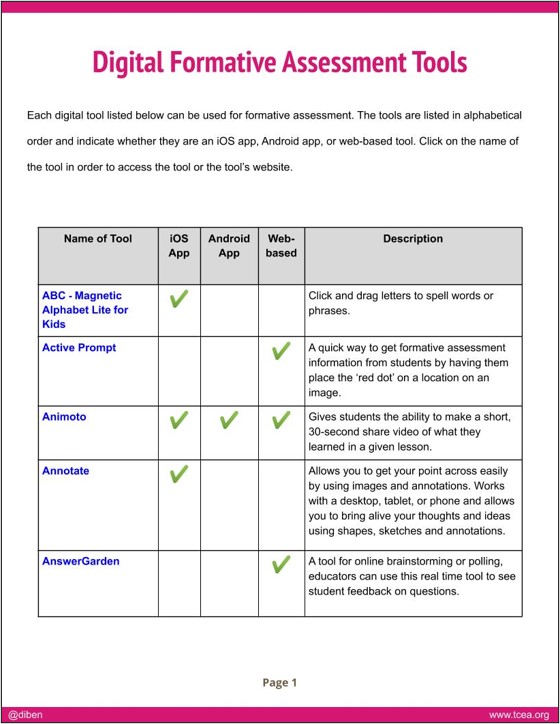Remote learning has left many of us wondering about how we will be assessing student learning. How will we know that students are understanding the content being delivered remotely?
When creating assessment for virtual learning, it is important that you know what you are assessing. You might find that the assessments you have traditionally used will no longer work. Perhaps those assessments no longer provide you with a full picture of how your students are learning. You might also discover that you need smaller, more frequent assessments or that you need to broaden the way you assess and try new methods.
Getting Started
Some things to ask yourself when assessing students in a virtual learning environment include:
- Can every student complete the assessment without any help from a family member?
- Have I provided enough time for students to ask questions before they complete the assessment?
- Does the assessment meet the needs of all my students?
Below are a few strategies that can provide you with data about what your students are learning.
Check for Understanding
It is more important now than ever to check for understanding during a lesson. A quick formative assessment will allow you to do this. You can pause and ask students to respond to a question in a chat. Students could give a thumbs up or thumbs down to a question. For students who do not want to share during synchronous sessions, they could always use video or audio to respond. Tools like Flipgrid or Vocaroo allow students to make quick recordings of what they have learned.
In addition, there are many other digital tools that you can use to give formative assessments. Any one of these tools will provide you with feedback so you can monitor student learning and adjust instruction, if needed.
Conversations
As we saw in the “Meaningful Student Connections During Remote Learning” blog post, having conversations and checking in with students is very important. Having regular talks with students will give you insight into how, when, and what they are learning. In his Edutopia article, Andrew Miller shares three powerful tips for how to effectively use conversation as an assessment tool.
Learning Journals

Encouraging students to document what they are learning during virtual school will help them self assess and reflect on their own learning. It will also provide you with insight into some of the challenges they might be having or areas they need clarification on. To help students get started with their journals, provide them with some guiding questions.
Ask questions such as: 1) What was the most challenging thing about today’s lesson? 2) Did you find today’s lesson easy, hard, or boring? 3) What questions do you still have about today’s lesson?
If you have younger students, encourage them to draw pictures to explain how they feel about what they are learning. You could also create a short video that explains what you would like for them to share.
If you would like to explore the topic of self-assessment more in detail, be sure to check out our Effective, Engagement with Self-Reported Grades online, self-paced course.
Performance Assessments
With performance assessments, students are asked to perform tasks or activities that allow them to demonstrate evidence of understanding. Performance assessments are usually open-ended and do not have a single, correct answer. Examples of performance assessments include projects, debates, presentations, and interviews.
Additional Tips
First of all, remember one size doesn’t fit all. Provide your students with some options to demonstrate understanding. Secondly, If you are using new digital tools for assessment, clearly communicate this to students and their families. They might need some time to learn how to use the tools. Lastly, consider providing shorter assessments so you can get data back more quickly.
Explore remote learning more in detail with our Remote Learning Educator Certification online course. In addition, we have created mini-sessions that focus on remote learning tips and tricks. How are you assessing student learning remotely? Please comment below.


